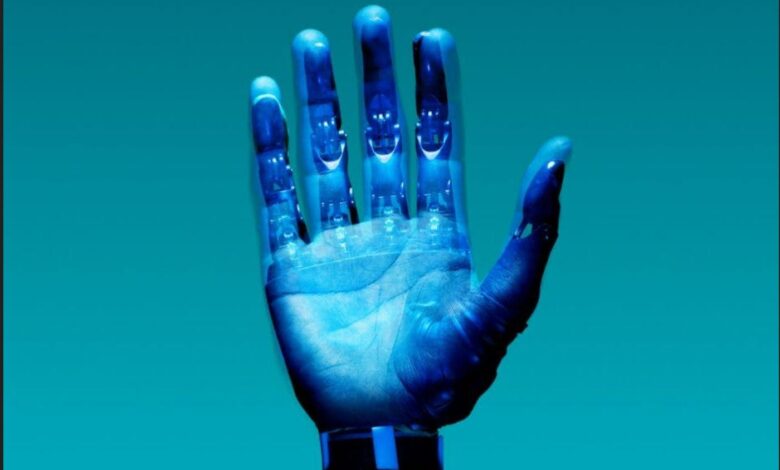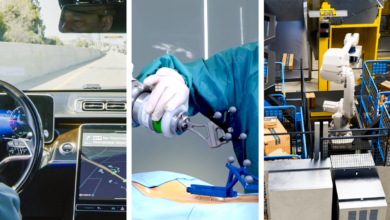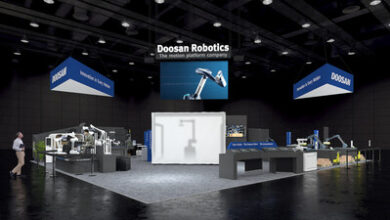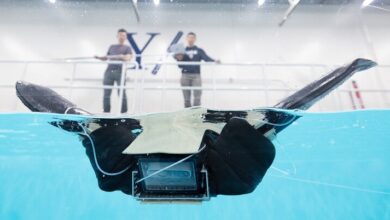How Can Robotics Be Implemented for Remote Surgery?

Is it strange to think a robot could operate on you one day? Although the healthcare industry is famous for being a late adopter of the latest technology, it’s quickly picked up robotics. The tech advances as professionals explore it, meaning there are plenty of use cases for machine-assisted remote surgeries.
Can robotic surgery be done remotely?
The short answer is yes — surgeons can use robots to operate on patients even if they’re not in the same place. Remote surgery — also known as telesurgery — uses wireless networking technology and live imaging to connect them to the operating room, regardless of location.
What technology is used in robotic surgery?
While the specific tech surgery robots use depends on the type of operation, most share the same basic features. Many use fifth-generation (5G) wireless networking to establish connections. Operators need a console — an interactive interface — to do anything remotely.
Most machines have at least one articulated arm to grasp, cut, or guide the operation. They also use a high-definition, 360-degree camera, and live imaging tech to feed visual information to the operator — how else would surgeons perform remote surgery?
Some of the latest versions use haptic feedback tech, enabling them to mimic the operators’ movements on the console. Others use artificial intelligence. Considering a convolution neural network model can
Examples of robots performing medical operations
You might be surprised to find out dozens of surgery robots already exist.
The da Vinci robot
The da Vinci robot got its name because its creators consider the term “robotic-assisted surgery” misleading, saying people perform operations, not the machines. In this context, the callback to Leonardo da Vinci — the famous artist, engineer and sculptor — makes sense.
This machine
The spacefaring robot
Engineers from the University of Nebraska-Lincoln (UNL) did what nobody ever has — they sent a surgical robot to the International Space Station. Weighing only two pounds,
Surgeons on Earth will use the robot’s camera and two articulated arms to perform simulated surgery in space. As impressive as this sounds, there’s no telling how it’ll go. Even though the launch was in January 2024, UNL won’t publish results until 2025 at the earliest.
The augmented reality robot
In 2020, two doctors
One surgeon stood six feet from the patient, using the machine’s four articulated arms to insert a camera tube into the problem area. Meanwhile, the other sat in their living room in a pajama robe, using an augmented reality pointer to guide the step-by-step operation.
The joystick robot
Massachusetts Institute of Technology (MIT) engineers developed a telerobotic system for treating victims of strokes. The operator
The advantages of robotic medical operations
Plenty of people live in healthcare deserts — areas where there aren’t enough medical resources, staff, or facilities to go around. Statistically, you’re probably one of them. In the U.S.,
Robotic-assisted surgery could eliminate this problem by bringing medical professionals wherever they’re needed. For example, a neurovascular surgeon could remotely treat a stroke victim in Atlanta from their office in Chicago.
There’s no longer a need for travel, either. If you’ve ever visited a specialist, you probably drove out of your way to see them. Some people with chronic illnesses even move to improve their access to care. Now that telesurgery exists, you may just have to visit your local hospital.
Another massive benefit involves patient outcomes — these machines are literally saving lives. They reduce hand tremors, enable early intervention, and are highly precise, lowering the risk of infection, blood loss, and complications.
Past robotic-assisted surgeries prove medical professionals can provide care
Ways robotics can be used for remote surgery
There are three main ways you could use robots for remote surgeries.
- Articulated robots
Articulated robots are among the most common in the medical field because they can do most things human hands can — they can insert tubes, make incisions, or administer medication. Operators can use them to carry out tasks remotely, lending their expertise to operations they otherwise would’ve never been a part of.
2. Autonomous robots
Although the healthcare industry is wary of adopting fully autonomous robotics, professionals and researchers are testing the tech. The idea is that a human will remotely oversee the operation while the machine carries out its tasks.
- Collaborative robots
Medical professionals often call on their colleagues or well-known individuals in their field for help — even doctors can’t be experts on everything. In these situations, they usually want guidance on where to make incisions or how to perform complex operations. Using collaborative robotics, their assistant can help them regardless of their location.
Will robots replace surgeons in the future?
It’s highly unlikely these machines will replace surgeons in the future. Although autonomous versions exist, you can probably agree most people won’t be comfortable being operated on by a machine without some level of human involvement. For now, these inventions are purely assistants.




